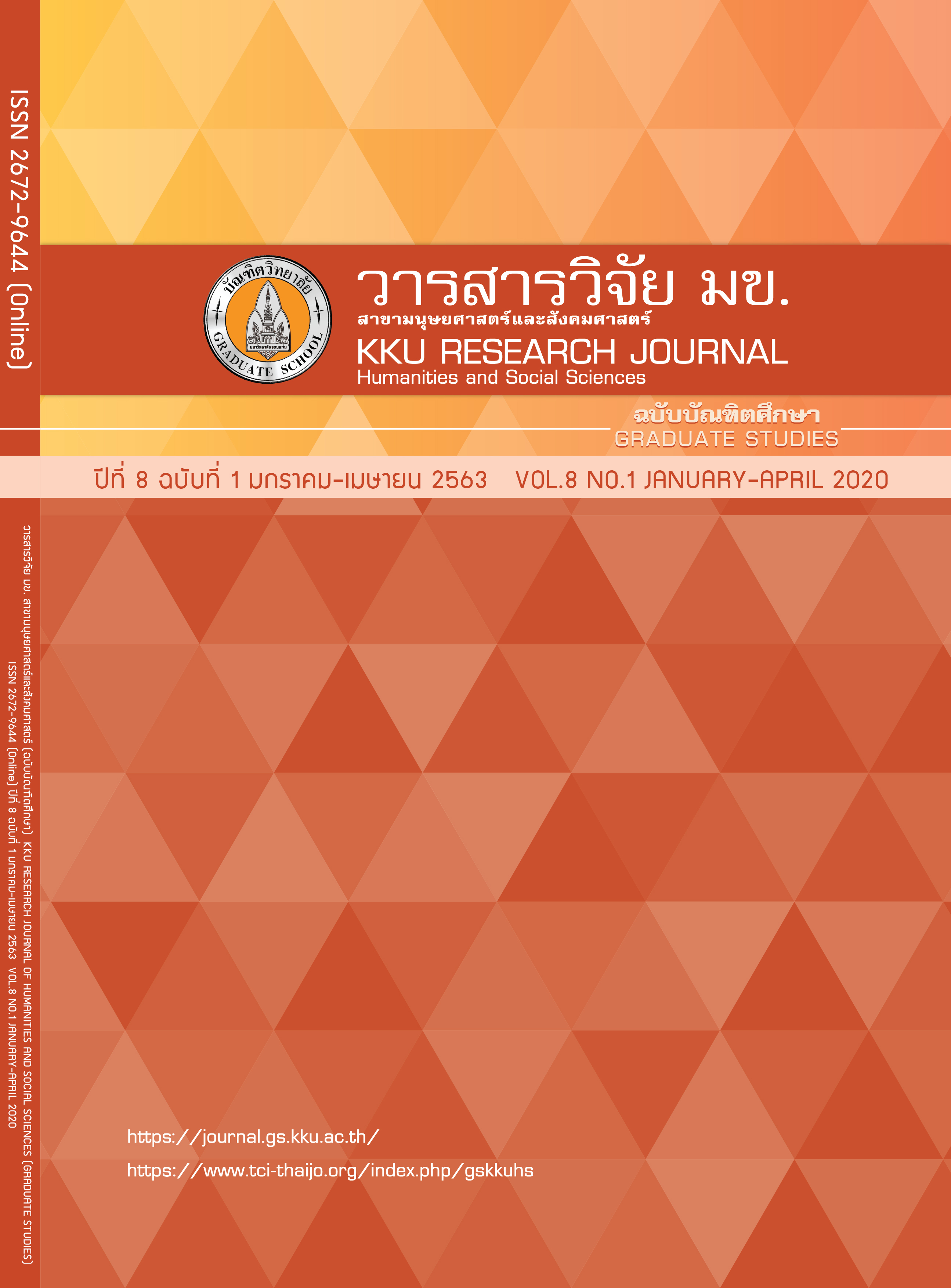The Effects of Web-based Learning Environment Based on Constructivist Theory to Enhance Creative Thinking on Topic Utilization of Graphics for Vocational Students
Keywords:
Web-based learning environment, Constructivist, Creative thinkingAbstract
The purposes of this research were to 1) design and develop web-based learning environment based on Constructivist theory to enhance creative thinking on topic utilization of graphics for vocational students, 2) study the creative thinking of students who learnt with the learning environment, 3) study the learning outcome of students, and 4) study the opinion of students. Target group for this research were 20 participants from 2nd year vocational student of Khon Kaen Vocational College in semester 1 of 2017 academic year. Research methodology used in this research was pre-experimental design (One Shot Case Study). Data were collected using 1) Web-based Learning Environment based on Constructivist Theory assessment form for experts 2)creative thinking assessment form, 3) creative thinking interview form, 4) learning outcome test, 5) opinion survey form. Quantitative data, which were learning outcome and creative thinking score, were analyzed using basic statistics such as percentage, mean, standard deviation. Qualitative data, which was creative thinking, was analyzed by protocol analysis, analytical description and interpretation. The results were as following. 1.The result in designing the web-based learning environment based on Constructivist theory to enhance creative thinking on topic utilization of graphics for vocational students has the 5 key elements as following (1) problem base (2) learning resource (3) collaboration (4) creative thinking lab (5) scaffolding (6) coaching, and has the efficiency in 5 aspects which were productivity, real world utilization context, students’ opinion, students’ cognitive ability, and learning outcome. 2.The result in studying the students’ creative thinking has been found that all students has passed the predefined criteria at 70 percent. Average score of creative thinking was 16.35 which was 81.75 percent of standard deviation at 1.31. Students’ creative thinking from the interview has been found that students has the creative thinking which consisted of (1) fluency (2) flexibility (3) originality and (4) elaboration. 3.Learning outcome of the students has been found that all students has passed the criteria at 70 percent. Average score from the post-test was 16.85 at standard deviation of 1.50 4.Result of students’
opinion about web-based learning environment based on Constructivist theory to enhance creative thinking on topic utilization of graphics can be summarized into 3 categories which were (1) aspect of contents, most students thought that there were enough contents in the learning environment which they can use to solve the problems and the language was easily understandable and suitable (2) aspect of web-based media, most students thought that the design was suitable, text color were harmonic and attractive (3) aspect of design the learning environment, most students thought that the design of problem based scenario helps stimulate the creative thinking of learners and learning task helps learner to think fluency, flexibility, originality and elaboration and also let the learner embrace the opportunity for them to control their learning process and search for their knowledge by practice.
References
2. Ministry of Education. National Education Act, BE 2542.
2nd edition. Bangkok: Teachers Council, Ladprao; 1999. p.8.
3. Chaichareon S. Constructivistm Theory. Khonkaen:
Department of Educational Technology, Faculty of Education,
Khon Kaen University; 2002. Thai.
4. Wattanachai S. The results of the study on the network
developed by the Constructivist. Injury of knee joint for 5th
year Veterinary Medicine students. Master of Education
Thesis Educational Technology College Khon Kaen University;
2004.
5. Kanjug I. The effect of environmental education on
the developed network along the line. Constructivism:
Open Learning Environments (OLEs) for graduate students.
Educational Technology. Master of Education Thesis
Educational Technology College Khon Kaen University; 2004. Thai.
6. Roonwat A. The effect of learning environment on the
developed network. Constructivist Learning Environments (CLEs)
in 212 700 Educational Technology and Teaching Systems
Development Master of Education Thesis Educational Technology
College Khon Kaen University; 2004. Thai.
7. Vocational Education. Commission Vocational Certificate
Program. Bangkok; 2014.
8. Aryawong L. Lecture Notes 217 720: Educational Research
Regulations. The 6th Edition of Khon Kaen University: Khon Kaen
University; 2000. Thai.
9. Guilford JP. The Nature of Human Intelligence.
New York: McGraw– Hill Book; 1967.
10. Mayer R H. Designing Instruction for Constructivist Learning.
In C.M. Reigeluth, (Eds.). In C.M. Reigeluth, (Ed). Instructional-design
Theories and Models: A New Paradigm of Instructional Theory,
Volume II. (pp. 141-160). Mahwah, NJ: Lawrence Erlbaum
Associates; 2005.
11. Brown J S, Collins A, Duguid P. Situated congnition and the
culture of learning. Educational Researcher, 18(1), 32-43; 1989.
12. Chaichareon S. Education Technology: Principles Theories to
Practices. Khon Kaen: Klungnanavitthaya Press; 2008. Thai.




